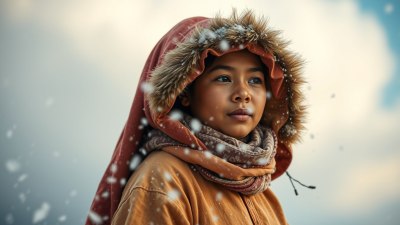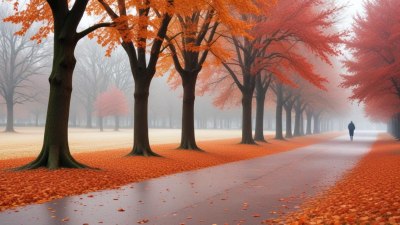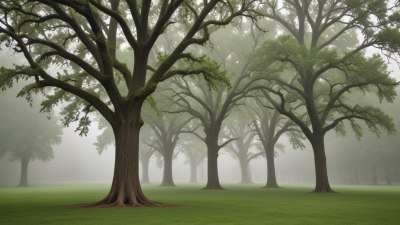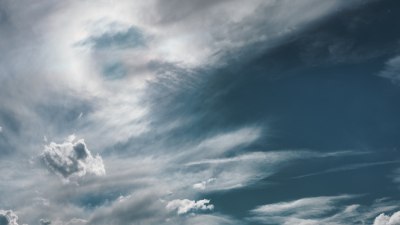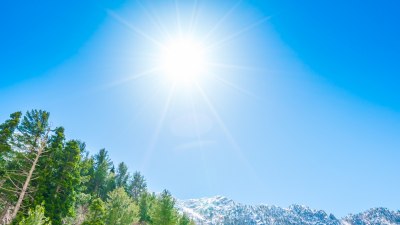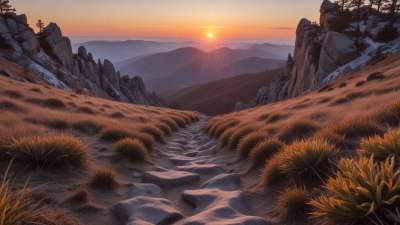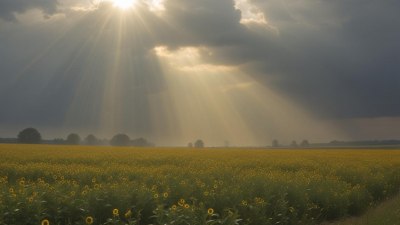The Strangest Weather Events in History
Explore the most bizarre weather phenomena recorded throughout history.
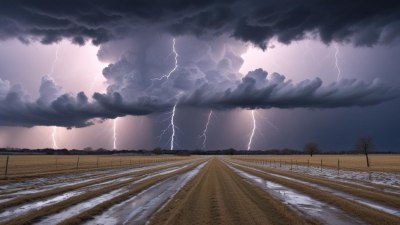
This image was created with the assistance of Freepik
Throughout history, weather has played a pivotal role in shaping human experience, culture, and environment. While we often think of weather as a predictable phenomenon—a sunny day, a rainy week, or an icy winter—there exists another side to our atmosphere that is far stranger and more unpredictable. From bizarre storms to unusual temperature spikes, the strangest weather events in history have mystified and fascinated humanity. This article delves into some of the most remarkable weather occurrences, illustrating the power and unpredictability of nature.
The Great Blizzard of 1888
One of the most notorious weather events in American history is the Great Blizzard of 1888, often simply referred to as the Blizzard of '88.' The storm, which struck from March 11 to March 14, 1888, affected the northeastern United States, bringing extreme conditions that were rarely seen before and have not been replicated since. Snow drifts reached heights of over 50 feet in some locations, effectively paralyzing cities from New York to Boston. Hundreds of trains were stranded, and many lives were lost as people endured the freezing temperatures and snow accumulation. Amidst the chaos, the blizzard instigated significant changes in U.S. meteorological policy, leading to the establishment of a more organized weather forecasting system.
The Year Without a Summer (1816)
The year 1816 entered the annals of history as 'The Year Without a Summer' due to the climatic aftermath of the 1815 eruption of Mount Tambora in Indonesia—one of the most powerful volcanic eruptions ever recorded. The ash and sulfuric acid ejected into the atmosphere led to drastically reduced temperatures across the globe. Regions that typically enjoyed warm summers experienced severe cold, persistent rain, and even snow in June. The agricultural implications were dire: crop failures occurred across North America and Europe, leading to food shortages and significant hardship. The year is notable not only for its weather anomalies but also for inspiring Mary Shelley to write 'Frankenstein,' as she and fellow poets found themselves unable to venture outdoors due to the unseasonably cold weather during their stay in Geneva.
The Phantom Rainstorm of 1953
In what might seem like something out of a science fiction tale, the 'Phantom Rainstorm' of 1953 baffled residents in the northeastern United States. During a particularly humid July, a forecast was made predicting a heavy rainfall that never came. However, what transpired was a strange event where rain was reported falling in one area, with residents noting that it left no trace on the ground. Meteorologists later determined that the cause was a combination of high humidity and specific atmospheric conditions that caused moisture to condense in the air, but evaporate before it could touch the ground. This unique weather phenomenon left many puzzled and contributed to the lore of strange weather occurrences.
Ball Lightning
One of the most mysterious phenomena connected to weather is ball lightning. This rare and poorly understood occurrence takes the form of glowing spheres of light that appear during thunderstorms, often floating through the air and sometimes moving quickly before exploding or vanishing. While scientific explanations for ball lightning have yet to be fully elucidated, many anecdotes throughout history detail encounters with these strange orbs. Different cultures have various interpretations of ball lightning, adding to its intrigue. Scientists continue to investigate the phenomenon, hoping to uncover the underlying physics that creates these luminous spheres of energy.
The Dust Bowl of the 1930s
The Dust Bowl of the 1930s was not merely a single weather event but a series of environmental disasters resulting from severe drought and poor agricultural practices in the American Midwest. Strong winds, coupled with prolonged periods of little to no rain, led to the lifting of topsoil, creating massive dust storms that swept across states such as Oklahoma, Texas, and Kansas. These storms, known as 'Black Blizzards,' obscured visibility and created devastating living conditions for families relying on agriculture. The Dust Bowl prompted significant migrations as people sought greener pastures. It also gave rise to government initiatives designed to prevent soil erosion and promote sustainable farming practices. Various cultural works have been produced in response to this catastrophic event, offering insight into its lasting impact on American society.
Heat Waves and Temperature Extremes
Extreme heat and temperature anomalies represent another facet of strange weather. In July 2021, the Pacific Northwest experienced unprecedented heat, with temperatures reaching 116°F (47°C) in places like Portland, Oregon. This phenomenon was attributed to a 'heat dome' effect, where high atmospheric pressure traps warm air in a region, leading to dangerously high temperatures. Such events emphasize the increasing frequency of extreme weather attributed to climate change. The consequences of these heat waves extend beyond discomfort; they drive up energy consumption, impact public health, and exacerbate drought conditions in already water-scarce regions. The growing frequency of these extreme temperatures has led to widespread discussions surrounding climate action and preparedness for future weather extremes.
The Great Flood of 1936
The Great Flood of 1936 stands as one of the most significant weather-induced disasters in U.S. history, affecting the northeastern states. Heavy rainfall combined with melting snow in the early months of 1936 created massive flooding across the Ohio River and its tributaries. During March and April, water levels rose dramatically, spilling over banks and inundating towns and cities. The disaster led to thousands of evacuations and significant property damage, prompting changes in flood management policies and disaster response protocols. The event spurred the federal government into action to invest in infrastructure that could mitigate the effects of future floods, including the establishment of the Tennessee Valley Authority, tasked with improving flood control in the region.
The 1997 Great Ice Storm
The Great Ice Storm of 1997 struck a wide area covering parts of the United States and Canada, bringing severe ice accumulation that resulted in one of the most destructive storms in history. Ice accumulation of up to three inches weighed down trees and power lines, leading to widespread power outages affecting millions. The storm challenged communities, with first responders struggling to clear downed branches and restore power. The aftermath highlighted the need for better preparedness for ice storms as well as the importance of maintaining electrical infrastructure. The storm eventually led to policy changes regarding emergency supply provisions and established protocols to aid communities during future extreme weather events.
The 2010 Eyjafjallajökull Eruption and Ash Cloud
The eruption of Iceland's Eyjafjallajökull volcano in April 2010 sent massive clouds of ash soaring into the atmosphere, affecting air travel across Europe and beyond. The ash cloud hindered visibility and forced hundreds of flights to be canceled, stranding travelers and creating travel chaos for millions. The event shed light on the intersections of weather and human activity. Not only did the ash and its effects on air travel reveal the unpredictability of volcanic activity, but it also raised questions about international preparedness for natural disasters that can impact multiple nations. The event incited discussions on the relationship between natural phenomena and human engineering, particularly in the context of disaster response and aviation safety.
The Snow Roller Phenomenon
Snow rollers are a bizarre weather phenomenon, often seen after the heavy snowfalls in specific conditions. These cylindrical shapes of snow form when snowflakes are packed down by wind and moisture, rolling along the ground to create these naturally sculpted forms that resemble large, white logs. While snow rollers have been documented throughout history, specific conditions must be met for them to occur, typically involving wet and heavy snow, as well as a conducive wind. They capture the imagination, prompting locals to marvel at these natural sculptures when they appear on winter landscapes. Additionally, they serve as a reminder of the delicate balance within meteorological phenomena that can lead to surprising and beautiful natural displays.
The Dreary Days of 1815
In the summer of 1815, an eruption of Mount Tambora caused climate shifts that turned months into an inexplicable patch of dreary weather. Many regions experienced extended rainy periods, low temperatures, and an overall lack of sun, making these days feel like autumn instead of summer. The impacts were felt around the world, emphasizing how a single volcanic event can lead to multi-year climatic alterations. The environmental and social ramifications were profound, as crops failed and the specter of famine loomed in many communities. Thus, the 'summer' that never was is often cited as a dramatic example of how interconnected our planet's ecosystems are and how quickly they can be disrupted by natural disasters.
The Hurricane of 1938
The hurricane of 1938, nicknamed the 'Long Island Express,' struck the New England coast with little warning as it made landfall on September 21. It packed a potent punch, leading to catastrophic damage and loss of life. The storm, categorized as a Category 3 hurricane, swept through densely populated areas, leaving infrastructural devastation in its wake. The unique track of the hurricane and the meteorological conditions surrounding it have long fascinated meteorologists, as it approached the coast largely unpredicted by forecasters of the time. The tragedy of this storm reinforced the need for improved tracking, preparedness, and early warning systems, leading to advancements in meteorological technology. Each of these strange weather events serves as a reminder of the unpredictability of nature and the need for proactive measures to mitigate their impact on human life and society. As climate change raises the stakes, understanding these events is crucial to preparing for an uncertain future.
Strange weather events throughout history offer a vivid tapestry of humanity's experience with nature's capriciousness. These events provide insights into the limits of our understanding of weather, the impacts of climate and environmental change, and the ways we adapt to and mitigate the challenges that arise from unusual climatic phenomena. Each story, whether it relates to extreme heat, flooding, or unprecedented snow, adds a unique thread to the interplay between human society and the natural world, illustrating both the resilience and vulnerability inherent in our shared existence. As we forge ahead, these accounts serve as essential reminders of our responsibility to respect and safeguard the delicate balance of our planet's climate, striving for a sustainable future even amid life's most unpredictable challenges.
